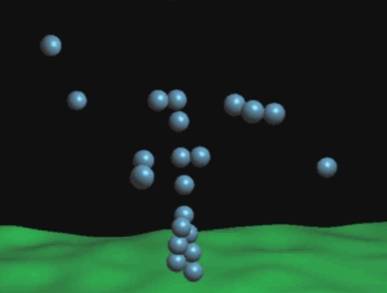
多动症是最常见的儿童精神失调疾病之一。约3%-5%的儿童受此困扰。近日研究者发现导致此疾病的原因在于DNA的片段缺失或片段复制异常。为治疗方案的确定提供了新基础。
英国科研人员经研究发现,患有多动症的儿童,其遗传物质脱氧核糖核酸(DNA)的某些片段缺失或异常复制。这是研究人员首次找到儿童多动症与遗传因素有关的直接证据。
英国加的夫大学的安妮塔塔帕尔领导的研究小组在新一期《柳叶刀》杂志上报告说,他们选取了1400多名儿童,进行基因组图谱扫描。结果发现,患有多动症的儿童,其DNA明显比正常儿童更容易出现“拷贝数变异”,即片段缺失或片段复制异常。
塔帕尔说,他们的研究结果直接表明,多动症是一种遗传失调导致的疾病,从而导致多动症患儿的大脑与其他儿童的大脑发育存在差异。
多动症是“注意缺陷障碍”的俗称,是最常见的儿童精神失调疾病之一。这是一种儿童轻微脑功能失调疾病,表现为注意力不能集中,异常好动,自我控制能力差,但没有明显的智力障碍。据估计,约有3%至5%的儿童会受到多动症的困扰,其中男孩比例大于女孩。
在此之前,多动症的病因在医学上一直没有得到确认。有研究者认为,多动症的病因可能与父母教养习惯有关,或者与儿童通过饮食摄入糖分过多等不良习惯有关。该病迄今尚无有效的治愈疗法,通常只能靠药物和行为矫正来控制症状。
塔帕尔等人认为,在他们的研究成果基础上,将来有望研制出针对多动症的新药物,进而开发出更加有效的治疗方案。
推荐英文摘要:
The Lancet doi:10.1016/S0140-6736(10)61109-9
Rare chromosomal deletions and duplications in attention-deficit hyperactivity disorder: a genome-wide analysis
Dr Nigel M Williams PhD a, Irina Zaharieva BSc a, Andrew Martin BSc a, Kate Langley PhD a, Kiran Mantripragada PhD a, Ragnheidur Fossdal PhD b, Hreinn Stefansson PhD b, Kari Stefansson MD b, Pall Magnusson MD c, Olafur O Gudmundsson MD c, Omar Gustafsson PhD bd, Prof Peter Holmans PhD a, Prof Michael J Owen MD a, Prof Michael O'Donovan MD a, Prof Anita Thapar MD a
Background
Large, rare chromosomal deletions and duplications known as copy number variants (CNVs) have been implicated in neurodevelopmental disorders similar to attention-deficit hyperactivity disorder (ADHD). We aimed to establish whether burden of CNVs was increased in ADHD, and to investigate whether identified CNVs were enriched for loci previously identified in autism and schizophrenia.
Methods
We undertook a genome-wide analysis of CNVs in 410 children with ADHD and 1156 unrelated ethnically matched controls from the 1958 British Birth Cohort. Children of white UK origin, aged 5―17 years, who met diagnostic criteria for ADHD or hyperkinetic disorder, but not schizophrenia and autism, were recruited from community child psychiatry and paediatric outpatient clinics. Single nucleotide polymorphisms (SNPs) were genotyped in the ADHD and control groups with two arrays; CNV analysis was limited to SNPs common to both arrays and included only samples with high-quality data. CNVs in the ADHD group were validated with comparative genomic hybridisation. We assessed the genome-wide burden of large (<500 kb), rare (&1% population frequency) CNVs according to the average number of CNVs per sample, with significance assessed via permutation. Locus-specific tests of association were undertaken for test regions defined for all identified CNVs and for 20 loci implicated in autism or schizophrenia. Findings were replicated in 825 Icelandic patients with ADHD and 35 243 Icelandic controls.
Findings
Data for full analyses were available for 366 children with ADHD and 1047 controls. 57 large, rare CNVs were identified in children with ADHD and 78 in controls, showing a significantly increased rate of CNVs in ADHD (0156 vs 0075; p=89×10?5). This increased rate of CNVs was particularly high in those with intellectual disability (0424; p=20×10?6), although there was also a significant excess in cases with no such disability (0125, p=00077). An excess of chromosome 16p13.11 duplications was noted in the ADHD group (p=00008 after correction for multiple testing), a finding that was replicated in the Icelandic sample (p=0031). CNVs identified in our ADHD cohort were significantly enriched for loci previously reported in both autism (p=00095) and schizophrenia (p=0010).
Interpretation
Our findings provide genetic evidence of an increased rate of large CNVs in individuals with ADHD and suggest that ADHD is not purely a social construct.
Funding
Action Research; Baily Thomas Charitable Trust; Wellcome Trust; UK Medical Research Council; European Union.
To read this article in full you will need to login or make a payment







